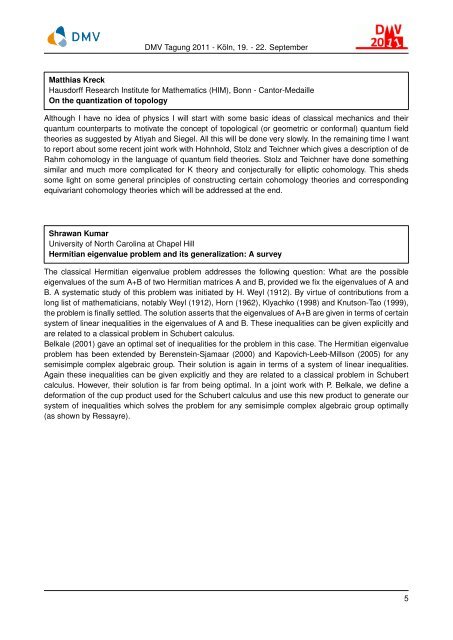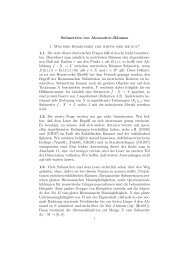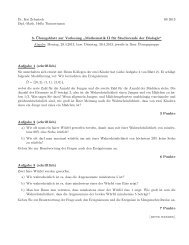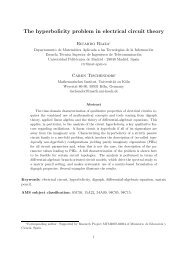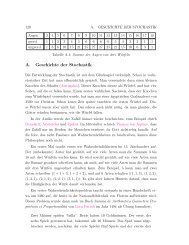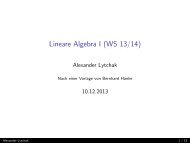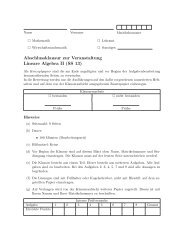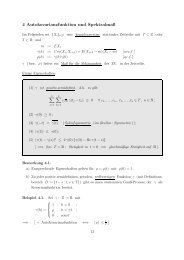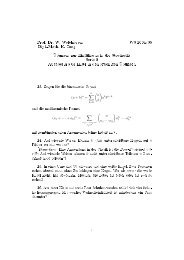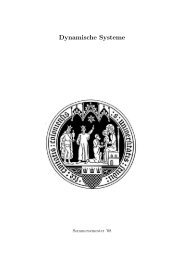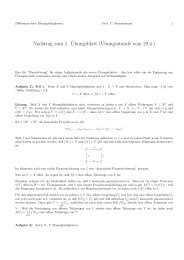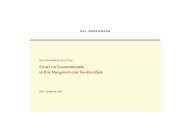Inhaltsverzeichnis - Mathematisches Institut der Universität zu Köln
Inhaltsverzeichnis - Mathematisches Institut der Universität zu Köln
Inhaltsverzeichnis - Mathematisches Institut der Universität zu Köln
Create successful ePaper yourself
Turn your PDF publications into a flip-book with our unique Google optimized e-Paper software.
DMV Tagung 2011 - <strong>Köln</strong>, 19. - 22. September<br />
Matthias Kreck<br />
Hausdorff Research <strong>Institut</strong>e for Mathematics (HIM), Bonn - Cantor-Medaille<br />
On the quantization of topology<br />
Although I have no idea of physics I will start with some basic ideas of classical mechanics and their<br />
quantum counterparts to motivate the concept of topological (or geometric or conformal) quantum field<br />
theories as suggested by Atiyah and Siegel. All this will be done very slowly. In the remaining time I want<br />
to report about some recent joint work with Hohnhold, Stolz and Teichner which gives a description of de<br />
Rahm cohomology in the language of quantum field theories. Stolz and Teichner have done something<br />
similar and much more complicated for K theory and conjecturally for elliptic cohomology. This sheds<br />
some light on some general principles of constructing certain cohomology theories and corresponding<br />
equivariant cohomology theories which will be addressed at the end.<br />
Shrawan Kumar<br />
University of North Carolina at Chapel Hill<br />
Hermitian eigenvalue problem and its generalization: A survey<br />
The classical Hermitian eigenvalue problem addresses the following question: What are the possible<br />
eigenvalues of the sum A+B of two Hermitian matrices A and B, provided we fix the eigenvalues of A and<br />
B. A systematic study of this problem was initiated by H. Weyl (1912). By virtue of contributions from a<br />
long list of mathematicians, notably Weyl (1912), Horn (1962), Klyachko (1998) and Knutson-Tao (1999),<br />
the problem is finally settled. The solution asserts that the eigenvalues of A+B are given in terms of certain<br />
system of linear inequalities in the eigenvalues of A and B. These inequalities can be given explicitly and<br />
are related to a classical problem in Schubert calculus.<br />
Belkale (2001) gave an optimal set of inequalities for the problem in this case. The Hermitian eigenvalue<br />
problem has been extended by Berenstein-Sjamaar (2000) and Kapovich-Leeb-Millson (2005) for any<br />
semisimple complex algebraic group. Their solution is again in terms of a system of linear inequalities.<br />
Again these inequalities can be given explicitly and they are related to a classical problem in Schubert<br />
calculus. However, their solution is far from being optimal. In a joint work with P. Belkale, we define a<br />
deformation of the cup product used for the Schubert calculus and use this new product to generate our<br />
system of inequalities which solves the problem for any semisimple complex algebraic group optimally<br />
(as shown by Ressayre).<br />
5


